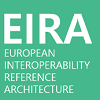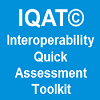
Covered by:
|
Use information systems and technical architectures that cater for multilingualism when establishing a European public service. Decide on the level of multilingualism support based on the needs of the expected users. Supporting Solutions |
|
Legal initiative |
Description | Recommendation |
|
Legislation:
Status: In force and transposed
|
The directive promotes the use of open data and lays down the legal framework for the reuse of public-sector information such as geographical, land registry, statistical or legal information held by public-sector bodies or public undertakings, and of publicly funded research data. Public-sector bodies and public undertakings must make their documents available in any pre-existing format or language and, where appropriate, by electronic means in formats that are open, machine readable, accessible, findable and reusable, complete with their metadata. |
Recommendation 16 |
|
Legislation:
In force |
This regulation aims to improve checks at the EU’s external borders, allow for better detection of security threats and identity fraud, and help in preventing and combating illegal immigration. | Recommendation 16 |
|
Legislation: Single Digital Gateway Regulation
Status: In force |
The single digital gateway will facilitate online access to the information, key administrative procedures and assistance and problem-solving services that citizens and businesses may wish to contact if they encounter problems when exercising their internal market rights while living in or doing business in another EU country. | Recommendation 16 |
|
Legislation:
Status: In force |
It aims to to improve checks at the EU’s external borders, allow for better detection of security threats and identity fraud, and help in preventing and combating illegal immigration. | Recommendation 16 |
|
Concrete example/good practice |
Summary |
| The use of law and the provision of multilingualism to foster the EIF implementation in Finland |
This concrete example illustrates the experience of Finland in implementing two of the EIF principles: Principle 1 on subsidiarity and proportionality and Principle 9 on multilingualism. It notably demonstrates that legislation is the most effective tool to foster interoperability at the national and sectorial levels. It also provides an overview of the challenges linked to the provision, by central government authorities and large cities, of services in English as well as, less frequently, in additional languages. These challenges, which concern in particular small municipalities, include the cost of maintaining websites in different languages, in terms of capacity, skills and time, and the direct translations of the public information displayed on these websites appear not to be as useful as expected for foreigners and would require some broader tailoring or explanation. |
| Solution | Description | Associated Recommendations |

CIRCABC |
CIRCABC (Communication and Information Resource Centre for Administrations, Businesses and Citizens) is an open-source, web-based application which enables geographically spread collaborative groups to share information and resources in private workspaces. | Recommendation 16 |

eCertis |
e-Certis is a free online tool mapping documents requested in public procurement procedures across borders. The system identifies and links certificates necessary as proof of compliance with tender criteria in various areas of administrative verification (e.g. tax, social security obligations, criminal records, etc.). This helps bring clarity to the cross-border bidding process. Information provided by e-Certis is inserted by National public entities in charge and regularly updated. The e-Certis service is linked with the European Single Procurement Document (ESPD), which is a single self-declaration form of a bidder's eligibility in public procurement. e-Certis and the ESPD significantly reduce the effort needed for submission of a tender offer and facilitate bidding across borders. |
Recommendation 16 |

|
The European Interoperability Reference Architecture (EIRA©) is an architecture content metamodel defining the most salient architectural building blocks (ABBs) needed to build interoperable e-Government systems. The EIRA© provides a common terminology that can be used by people working for public administrations in various architecture and system development tasks. The EIRA© was created and is being maintained in the context of Action 2016.32 of the ISA² Programme. The EIRA uses (and extends) the ArchiMate language as a modelling notation and uses service orientation as an architectural style. | Recommendation 16 |

eTranslation |
The CEF eTranslation Building Block is a machine translation tool that helps public administrations and businesses exchange information and documents across all official EU languages, Icelandic and Norwegian. Public administrations, citizens and businesses in the EU will thus be able to benefit from digital services in the language of their choice. |
Recommendation 16 |
|
European Union |
The European Union Location Framework (EULF) Blueprint is a framework of recommendations and related guidance for publishing and using location information and applying interoperability principles in digital government. The EULF Blueprint was initially developed through the EULF project in the ISA programme. The content has been updated extensively through the European Location Interoperability Solutions for e-Government (ELISE) project, which is part of the ISA2 programme. | Recommendation 16 |

EUSurvey |
EUSurvey, the new version of IPM, is a multilingual online survey management system built for the creation and publication of surveys and public consultations. It covers all steps of a survey life cycle, from the design to the launch of the survey to the analysis and publication of results. It offers different types of questions, from simple text and multiple-choice questions to spreadsheet questions or multi-media survey elements. Results can be displayed as histograms, percentages or in full detail and can be exported to different formats and published automatically on a dedicated webpage within the application. It is widely accessible and provides support for either identification or anonymity, depending on survey requirements. |
Recommendation 16 |

IMAPS solution v1.2 |
IMAPS is a user-friendly online questionnaire, designed as a self-assessment tool to assist public service owners to evaluate key interoperability aspects of their digital public service. Not only can IMAPS be used to assess the interoperability of any public service – from open data portals, and e-voting platforms, to public procurement services, and much more – it is applicable to services at all levels of government (international, national, regional and local). |
Recommendation 16 |

Interoperability Quick Assessment Toolkit (IQAT) |
The objective of the IQAT© is to allow Solution Owners to assess the Potential Interoperability of their software solutions supporting Public Services. The toolkit is based on a specific conceptual model for the Interoperability assessment of software solutions, which relies on four interoperability areas: Interoperability (IOP) Governance, Software Architecture, |
Recommendation 16 |

LEOS software components (under EUPL) |
LEOS is designed to help those involved in draſting legislation, which is usually part of a complex process, by facilitating efficient online collaboration. Comments, suggestions, version control, co-edition, everything is there. Regarding the structure, that is where we aim to be as restrictive as possible and this is not because we are conservative, but because this helps the draſters follow the rules and avoid mistakes. Content is stored in an XML format, currently Akoma Ntoso V3. | Recommendation 16 |

Multilingual semantic indexing |
This public multilingual knowledge management infrastructure will support e-commerce solutions, such as machine translation, localisation and multilingual search, by creating interoperable multilingual classifications and terminologies that will be easily reusable by small and medium-sized enterprises (SMEs) and public administrations. SMEs are currently at a disadvantage compared to big companies due to the high cost of providing multilingual services. | Recommendation 16 |

PMKI platform (final system) |
PMKI is a ISA2 pilot project aiming to:
|
Recommendation 16 |

Re3gistry |
Re3gistry provides a central access point that allows labels and descriptions for reference codes to be easily looked up by humans, or retrieved by machines. It supports organisations in managing and updating reference codes in a consistent way, so that all versions of a code remain traceable and properly documented, and do not change or disappear over time. | Recommendation 16 |

Ref2link package (under EUPL) |
Ref2Link automates the detection of references and generates hyperlinks based on dynamic and customisable rules. You can use Ref2Link as a standalone tool or as a building block in IT systems such as LEOS. Ref2Link supports out-of-the-box multilingual detection of EU legal instruments. It enforces the European Legislation Identifier and European Case Law Identifier standards and other references if needed. National public administrations may adapt the default detection rules to meet their own specific requirements. The code will be made available under the free European Union Public Licence (EUPL). |
Recommendation 16 |

The Sharing and Reuse Framework for IT Solutions (SRF) |
Developed in the context of European Union ISA programme, the Sharing and Reuse Framework for IT Solutions addresses EU, national, regional and local public administrations that aim at reducing costs, increasing their efficiency and fostering interoperability by reusing, sharing or jointly developing IT solutions that meet common requirements. | Recommendation 16 |
|
SIMAPS solution v1.0.0 |
This is v1.0.0 of the Semantic Interoperability Maturity Assessment of a Public Service (SIMAPS) survey. This version of the SIMAPS survey has been released on the 02 July 2020 on Joinup. It is a user-friendly online questionnaire, designed as a self-assessment tool to assist public service owners to evaluate key semantic interoperability aspects of their digital public service. The current version of SIMAPS (SIMAPS v1.0.0) is available at the EU survey portal: https://ec.europa.eu/eusurvey/runner/SIMAPS_v_1_0_0 The release is composed of the following elements:
|
Recommendation 16 |
|
TIMAPS solution v1.0.0 |
This is the Beta version of the Technical Interoperability Maturity Assessment of a Public Service (TIMAPS) survey. This Beta version of the TIMAPS survey has been released on the 02 July 2020 on Joinup. It is a user-friendly online questionnaire, designed as a self-assessment tool to assist public service owners to evaluate key technical interoperability aspects of their digital public service. The current Beta version of TIMAPS (TIMAPS v1.0.0 Beta) is available at the EU survey portal: https://ec.europa.eu/eusurvey/runner/timaps-beta This release is composed of the following elements:
|
Recommendation 16 |

|
PM² is a Project Management Methodology developed and supported by the European Commission. Its purpose is to enable project teams to manage their projects effectively and deliver solutions and benefits to their organisations and stakeholders. PM² is a light and easy to implement methodology suitable for any type of project. PM² has been custom developed to fit the specific needs, culture and constraints of EU Institutions, but also incorporates elements from globally accepted best practices, standards and methodologies. | Recommendation 16 |
| VocBench provides a solution to centralise the management of controlled vocabularies and metadata used by your public administration to support interoperability. | Recommendation 16 |





